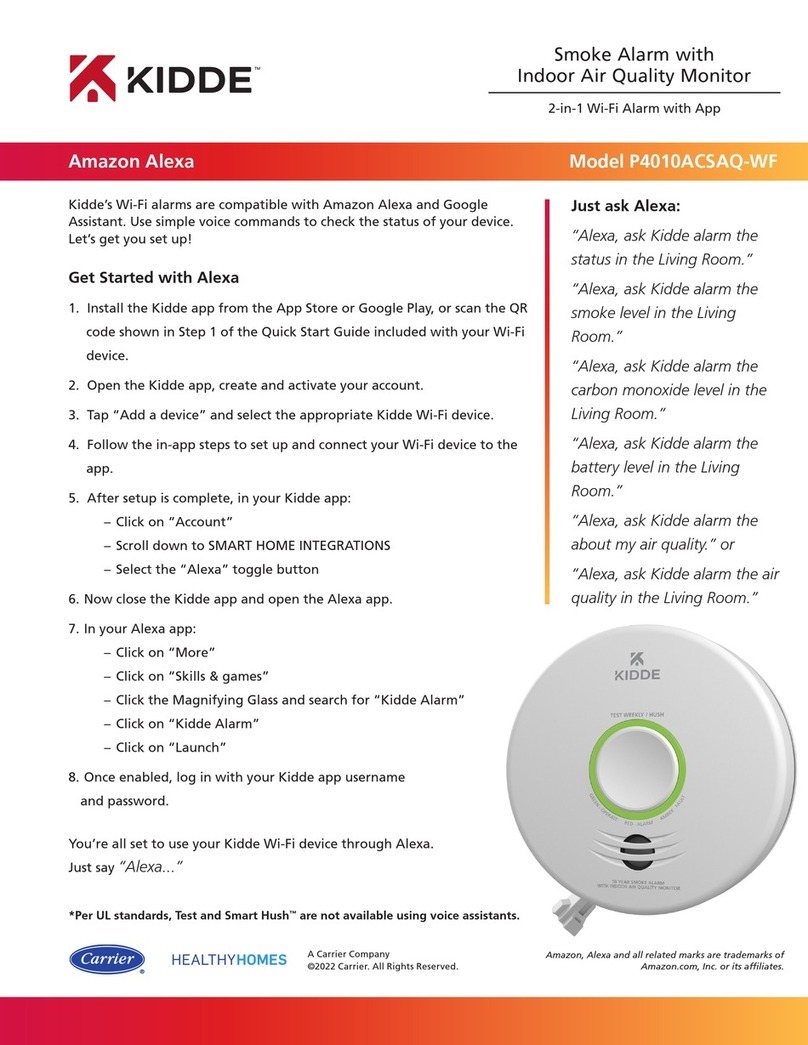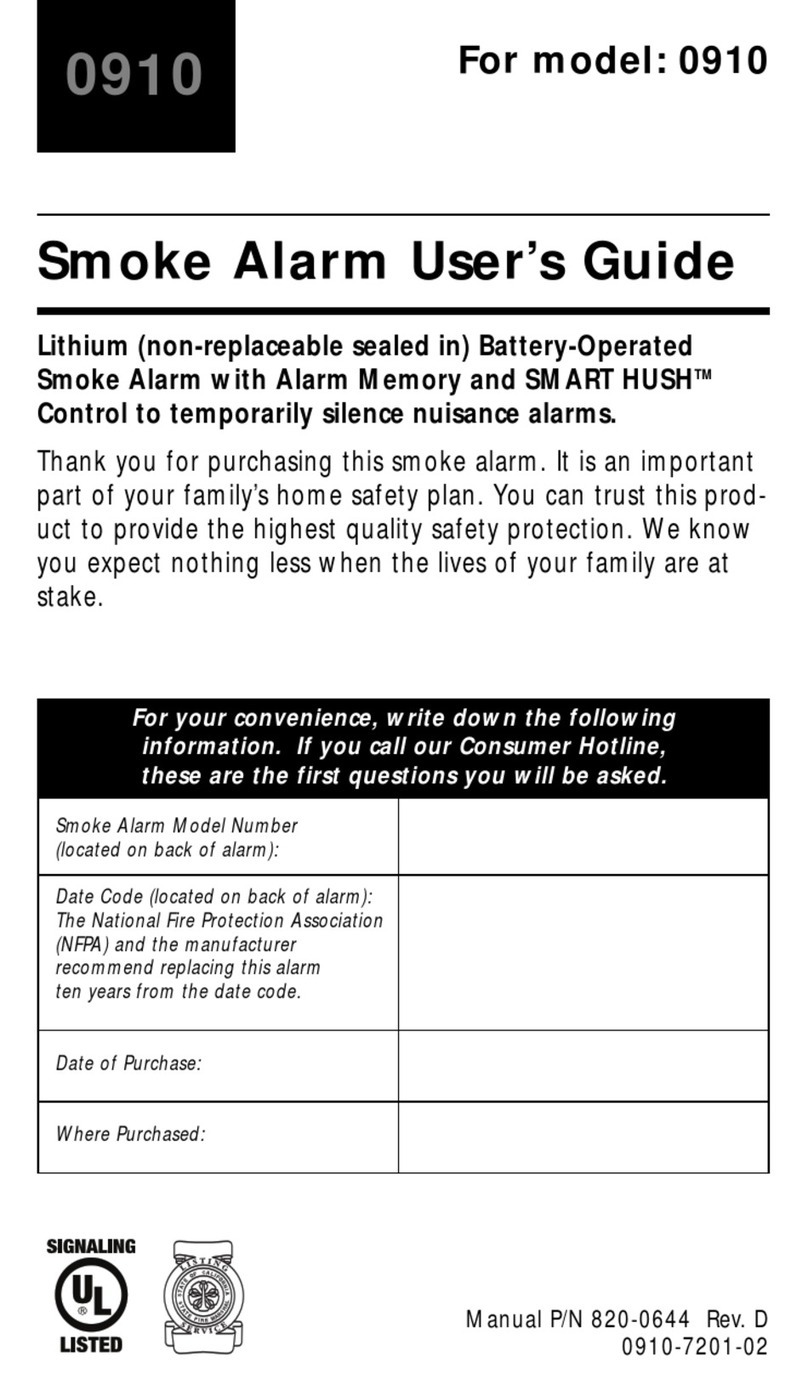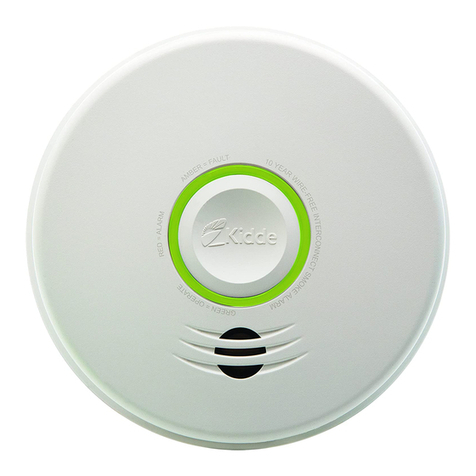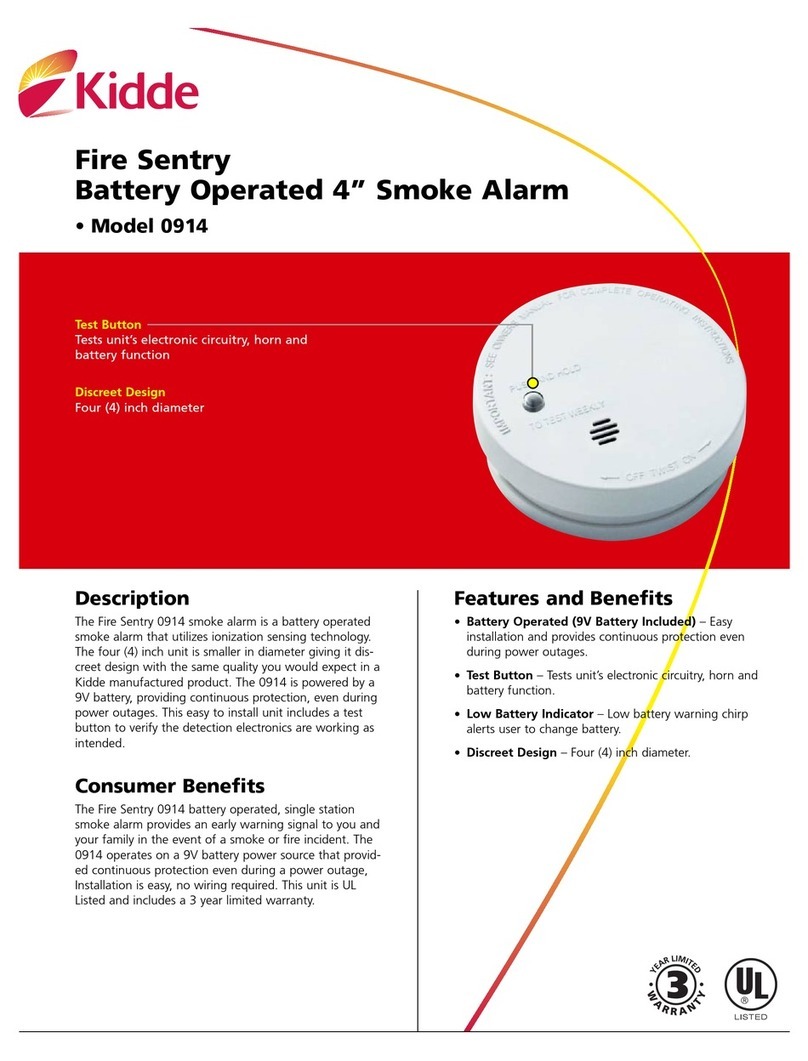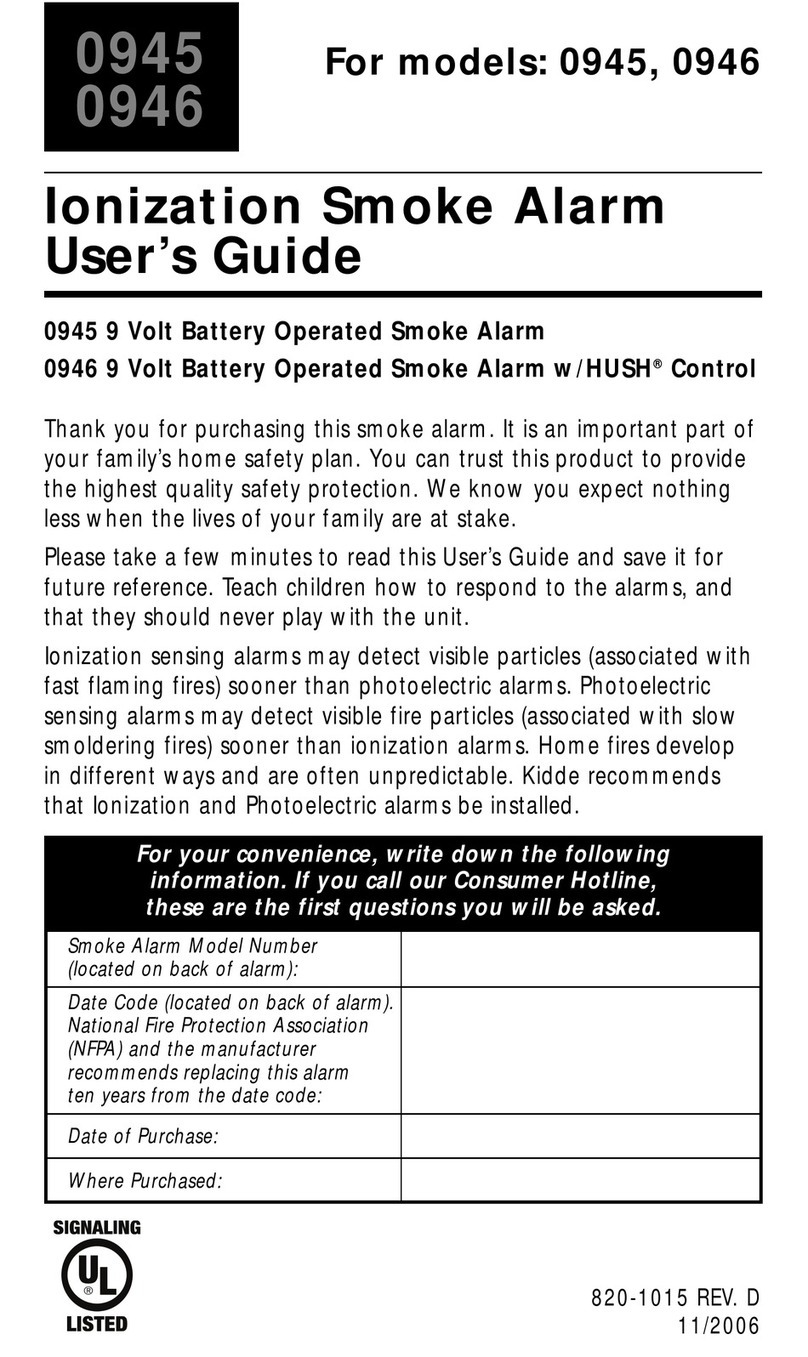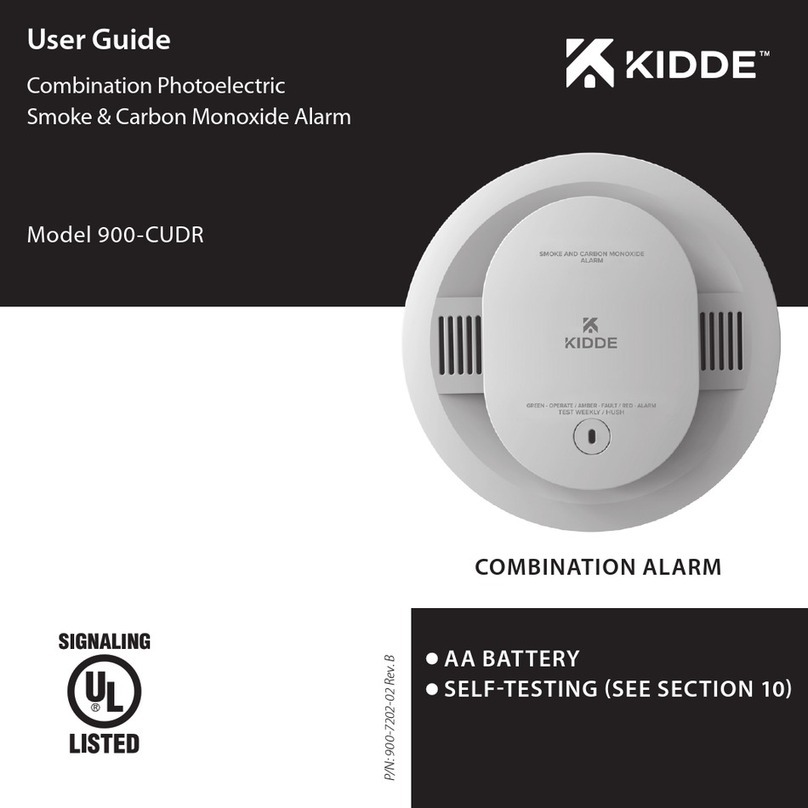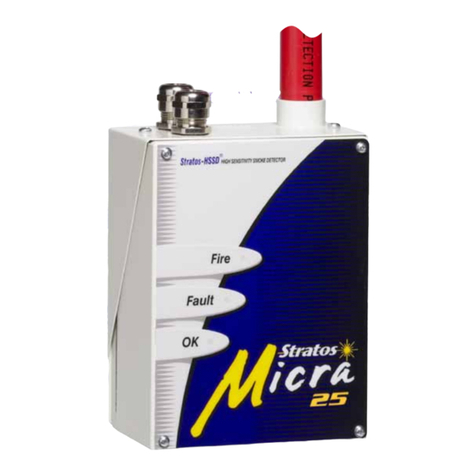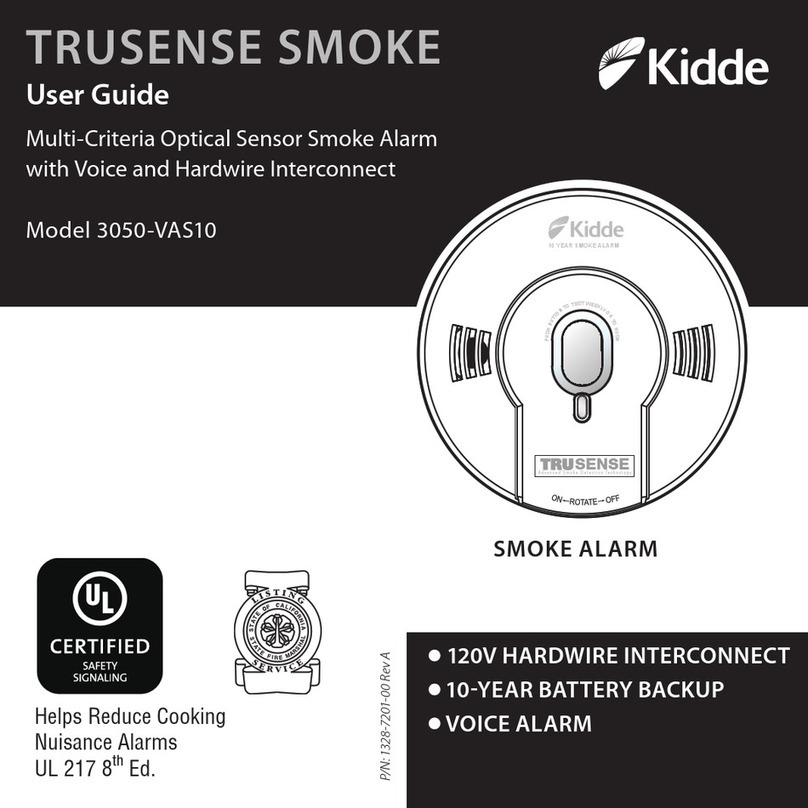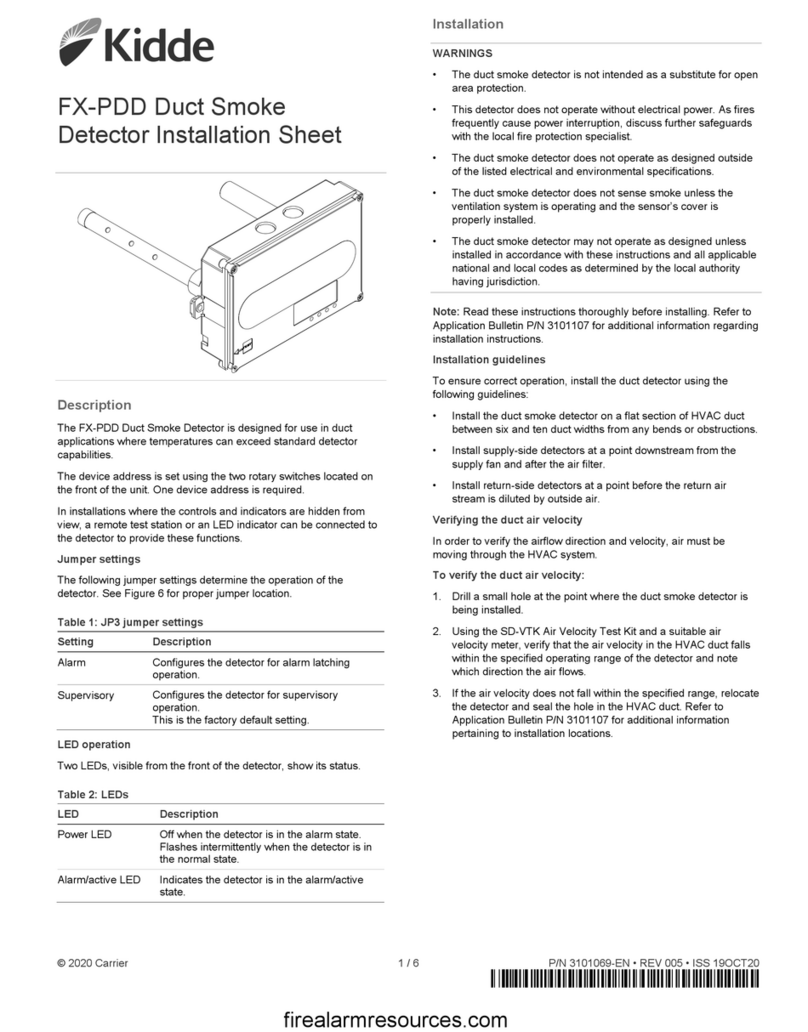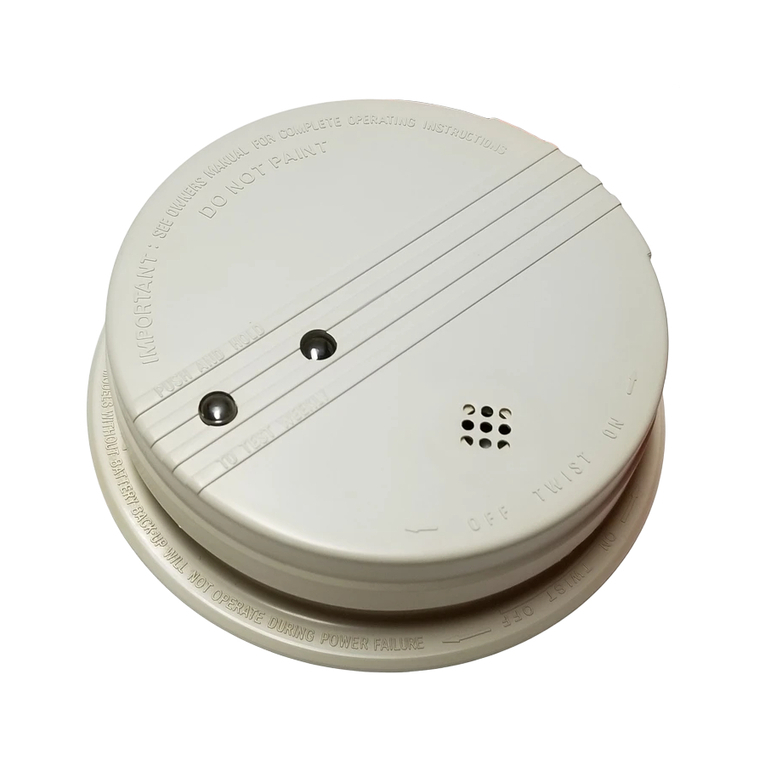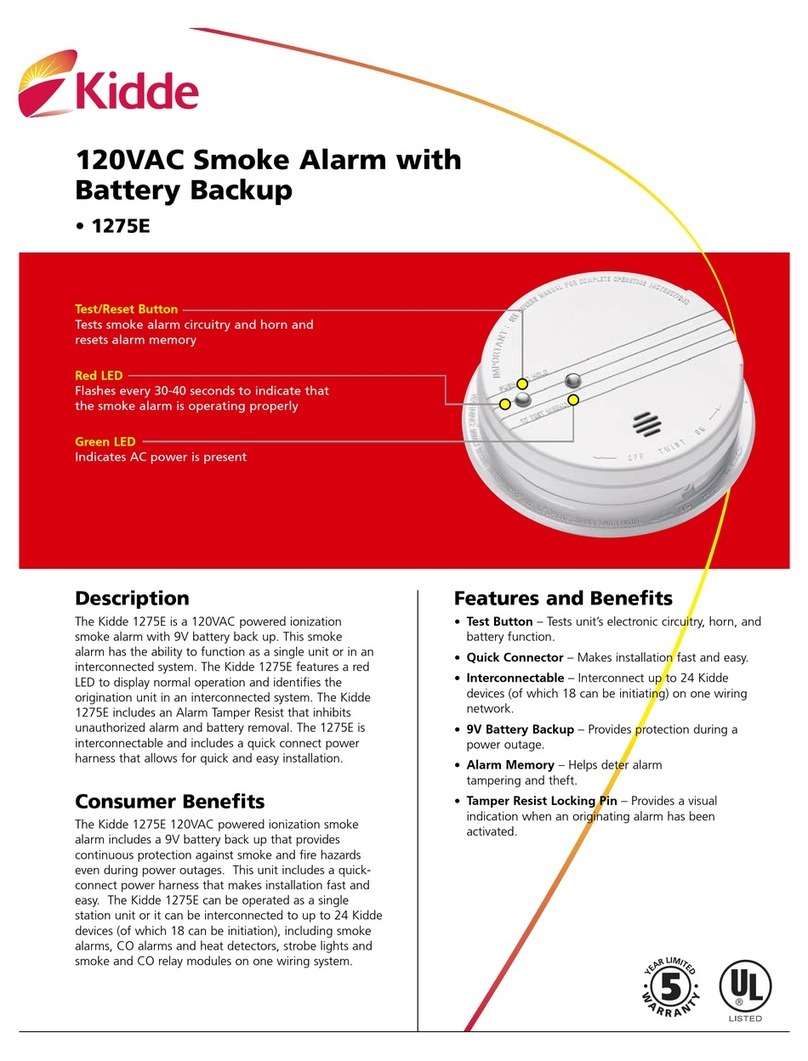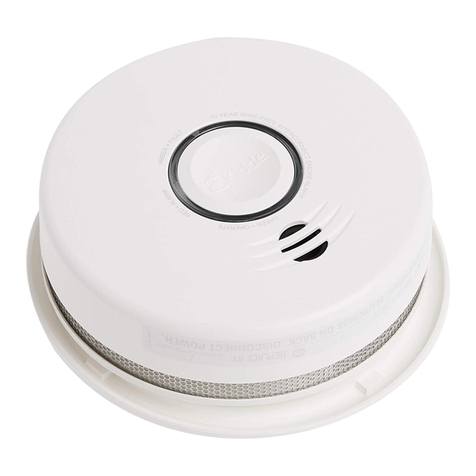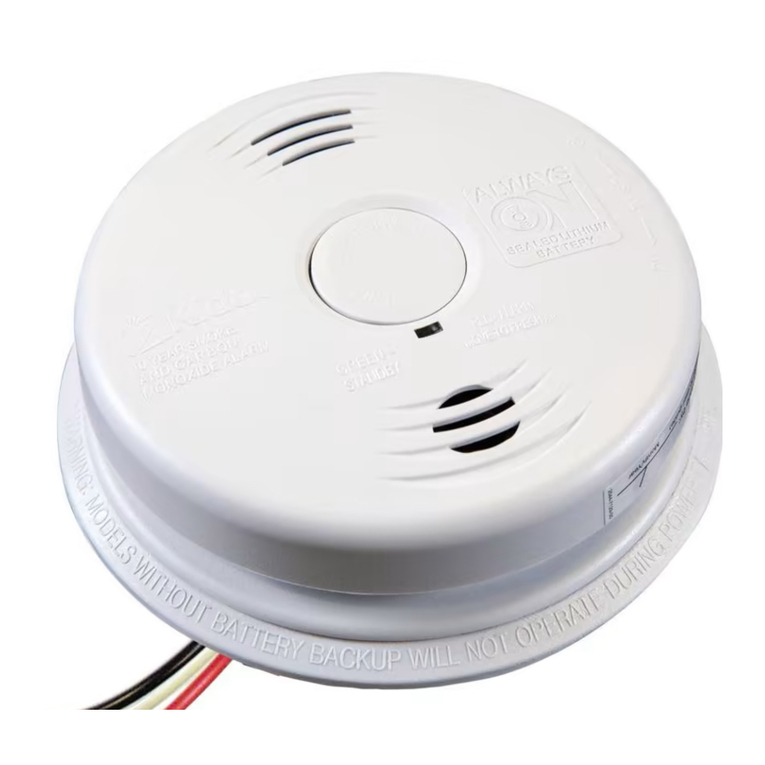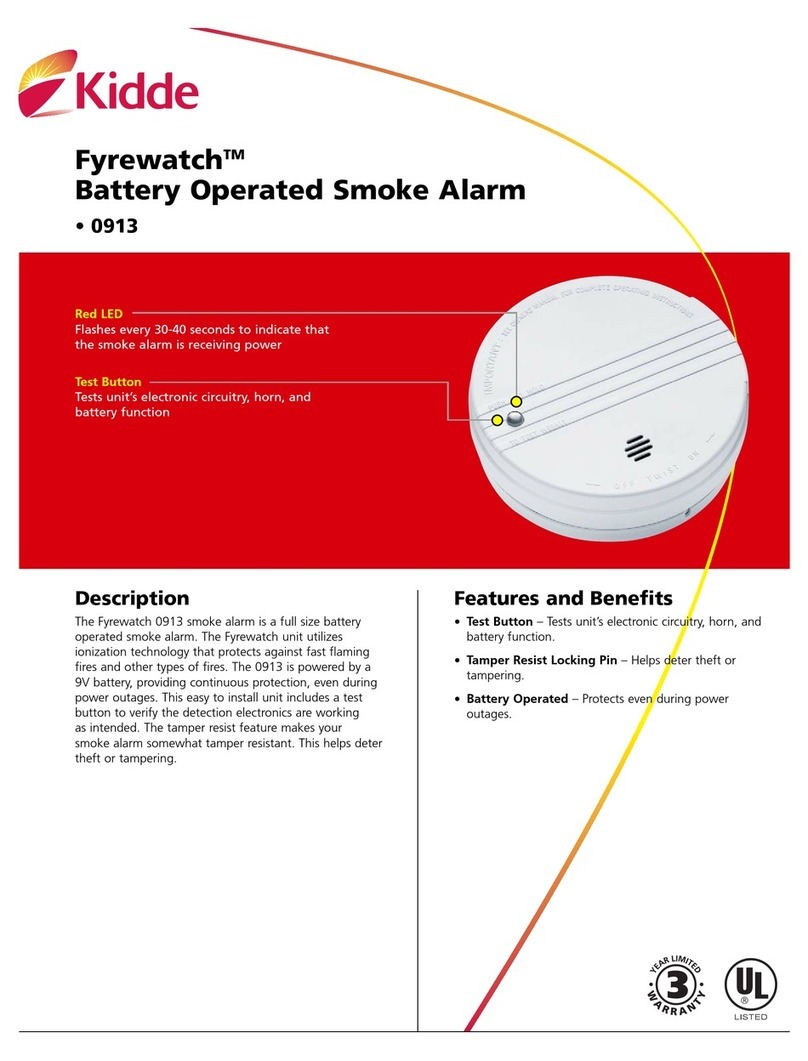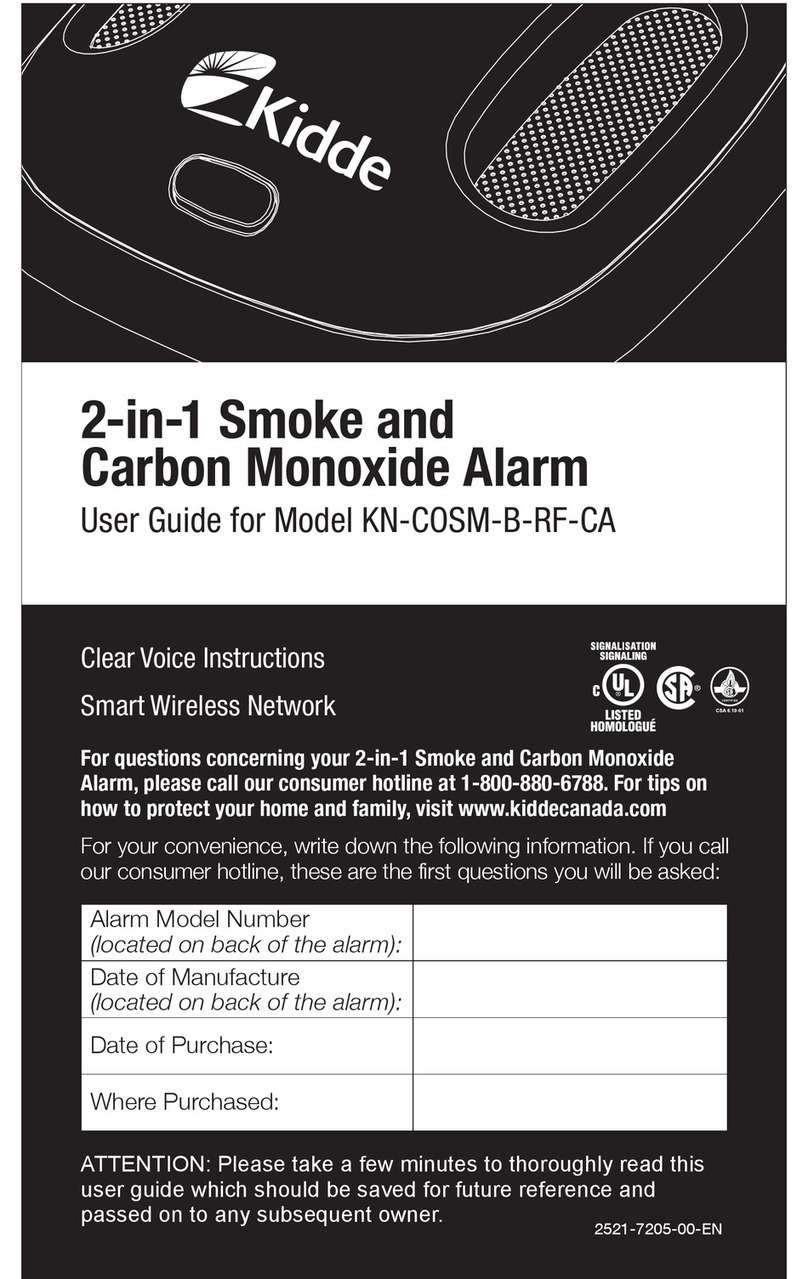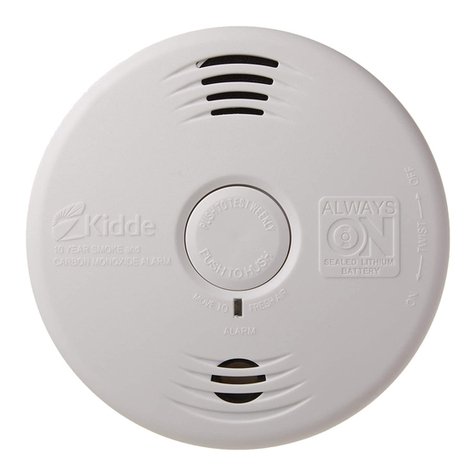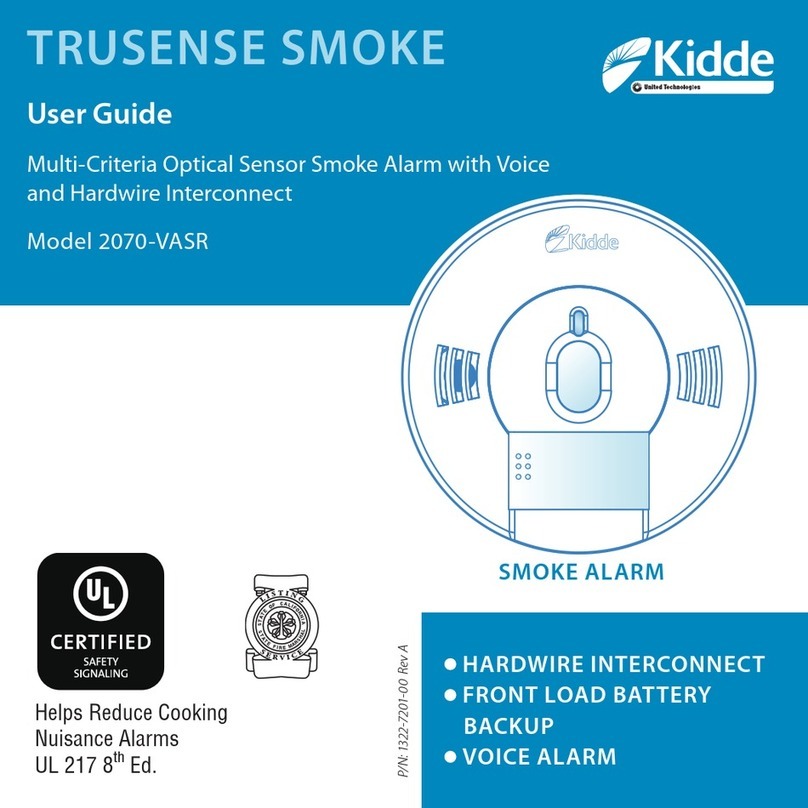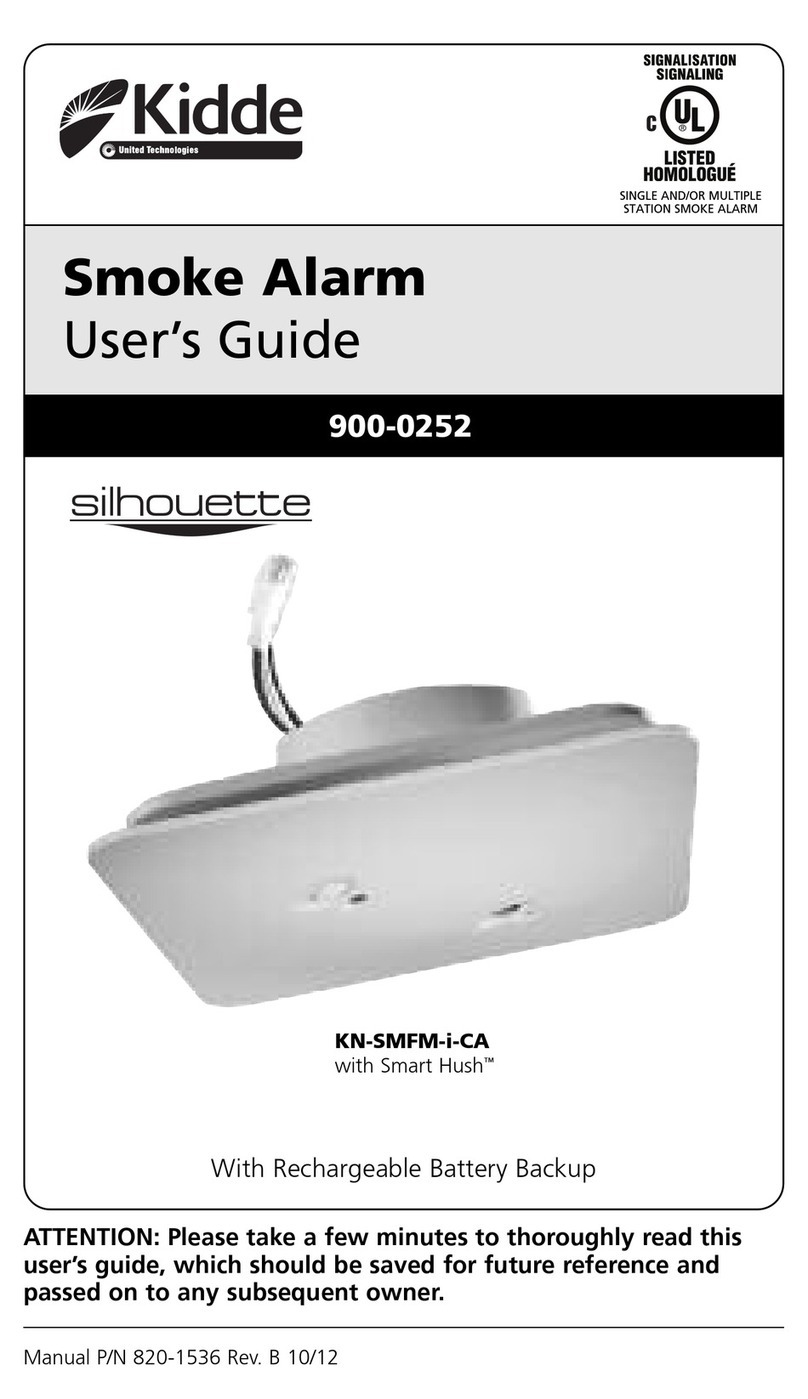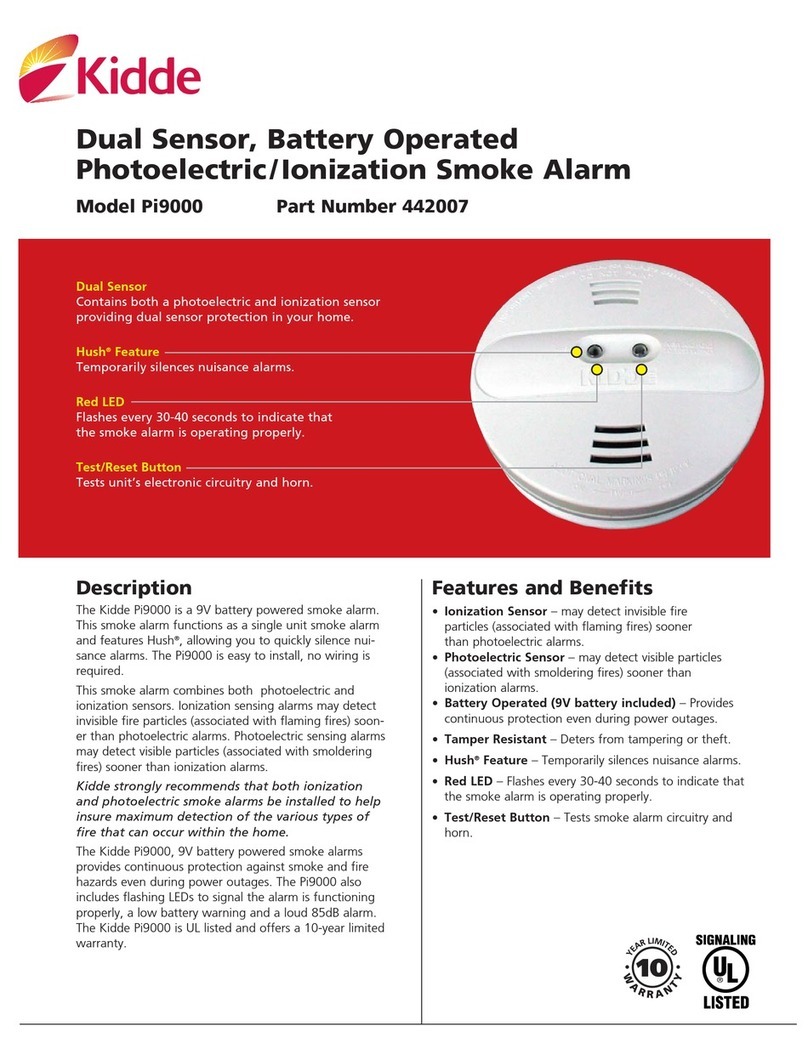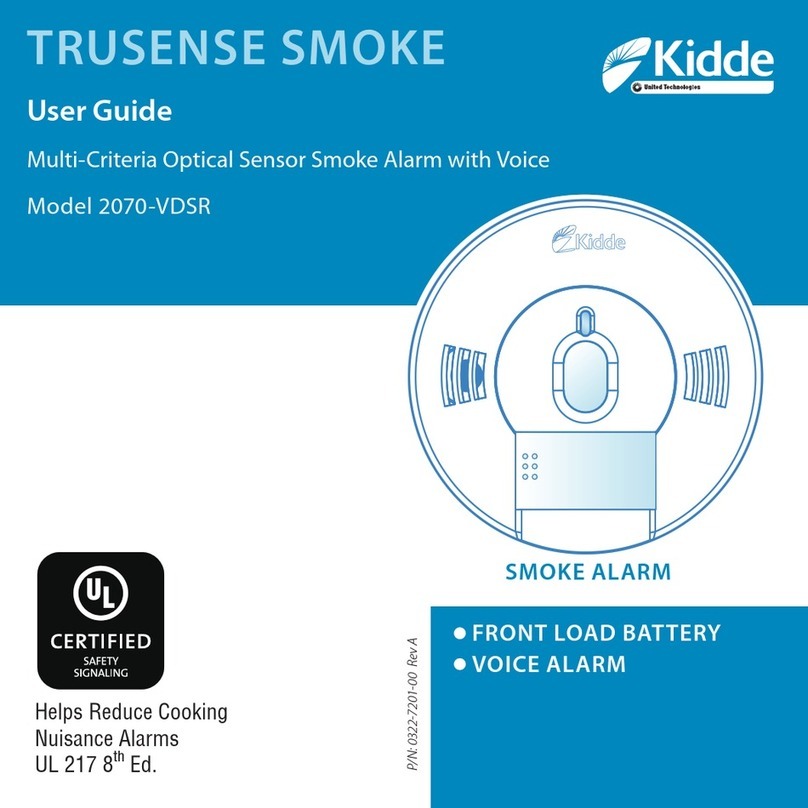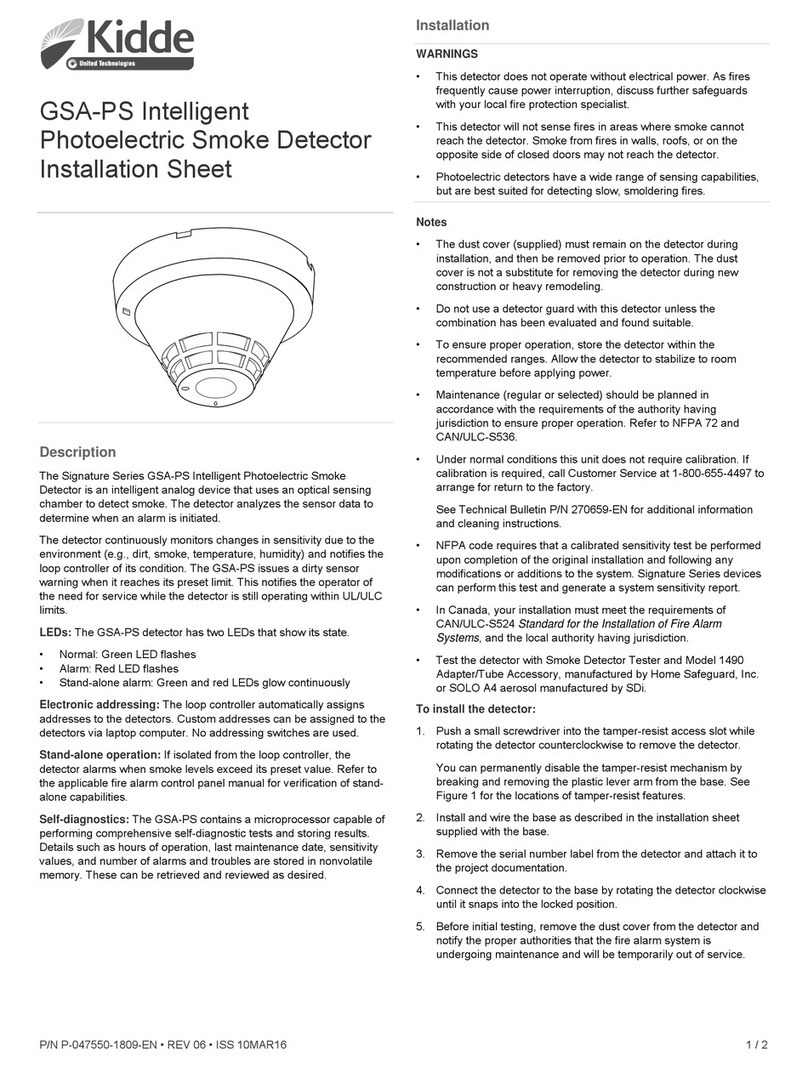
8
5. Limitations of Smoke Alarms
Warning: please read carefully and thoroughly
Life safety from re in residential occupancies is based primarily on early notication to occupants of the need to
escape, followed by the appropriate egress actions by those occupants.
• Fire warning systems for dwelling units are capable of protecting about half of the occupants in potentially
fatal res. An alarm may not be effective in some situations, such as during incendiary res where the re
grows so rapidly that an occupant’s egress is blocked even with properly located alarms, or when victims
are intimate with the re (for example, when a person’s clothes catch re while cooking), too old or young, or
physically or mentally impaired such that they cannot escape even when warned early enough that escape
should be possible. For these people, additional strategies such as protection-in-place or assisted escape
or rescue are necessary.
• There are situations where a smoke alarm may not be effective to protect against re. For instance:
a) smoking in bed
b) leaving children home alone
c) cleaning with ammable liquids, such as petrol
• A battery powered alarm must have a battery of the specied type, in good condition and installed properly.
• Smoke alarms must be tested regularly to make sure the battery and the alarm circuits are in good operating
condition.
• Smoke alarms cannot provide an alarm if smoke does not reach the alarm. Therefore, smoke alarms may
not sense res starting in chimneys, walls, on roofs, on the other side of a closed door or on a different oor.
• If the alarm is located outside the bedroom or on a different oor, it may not wake up a sound sleeper.
• The use of alcohol or drugs may also impair one’s ability to hear the smoke alarm. For maximum protection,
a smoke alarm should be installed in each sleeping area on every level of a home.
• Although smoke alarms can help save lives by providing an early warning of a re, they are not a substitute for an
insurance policy. Home owners and renters should have adequate insurance to protect their lives and property.
This alarm is not intended to alert hearing impaired individuals.
